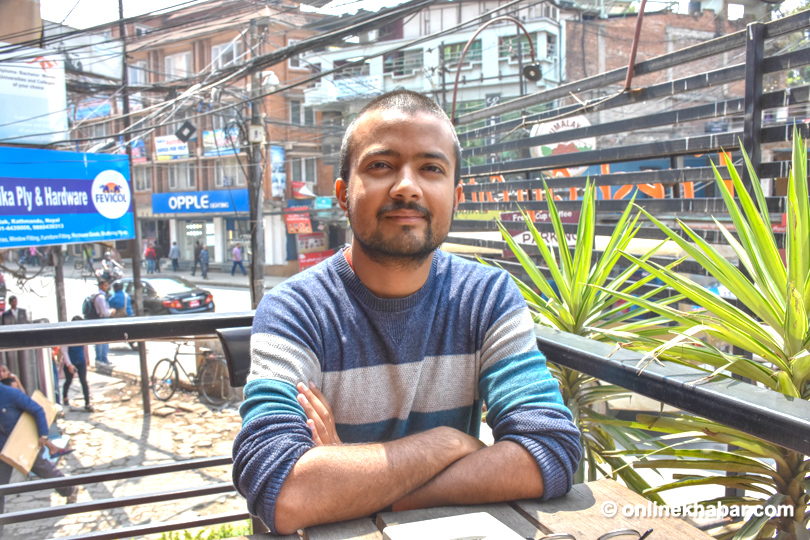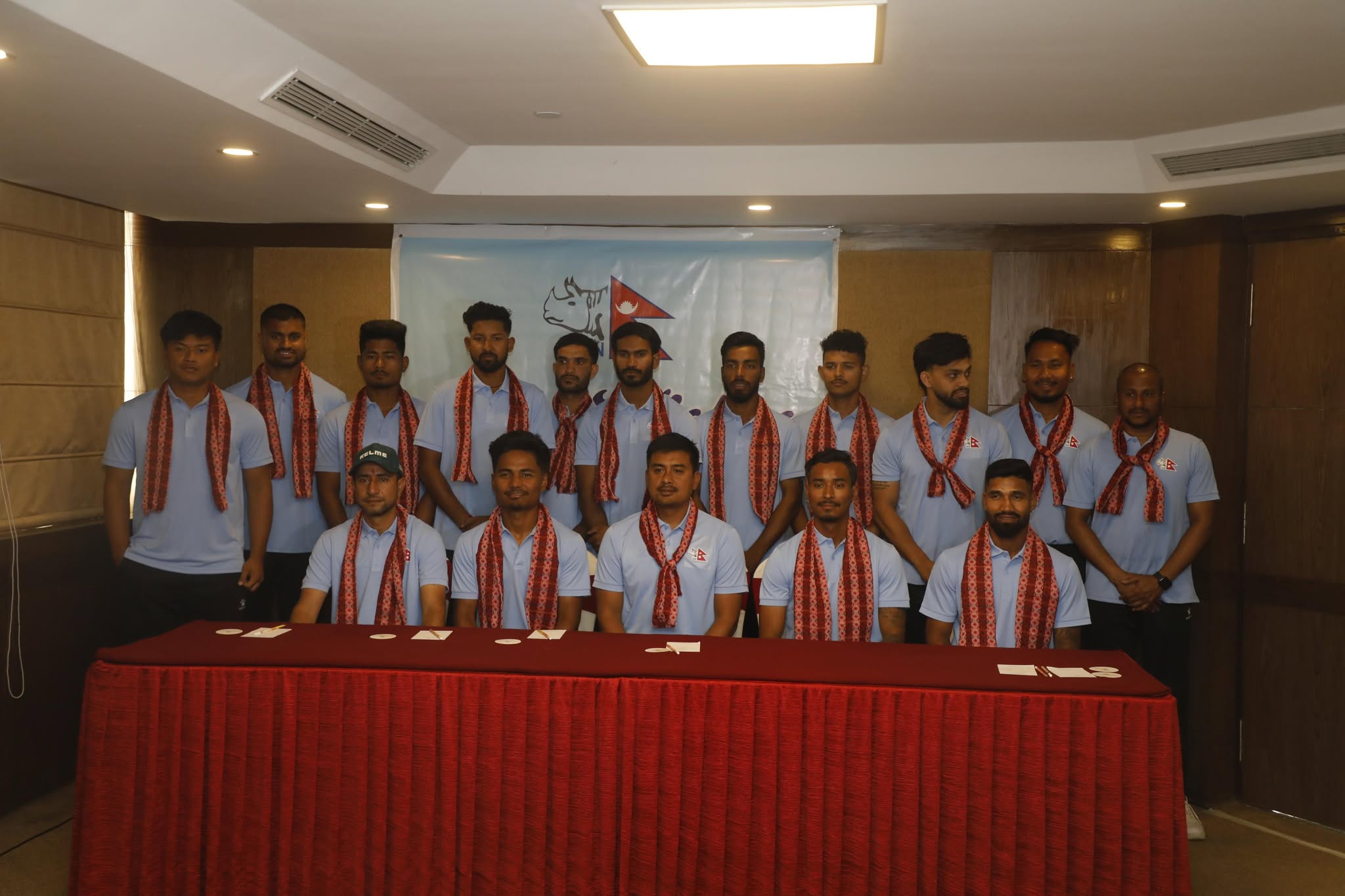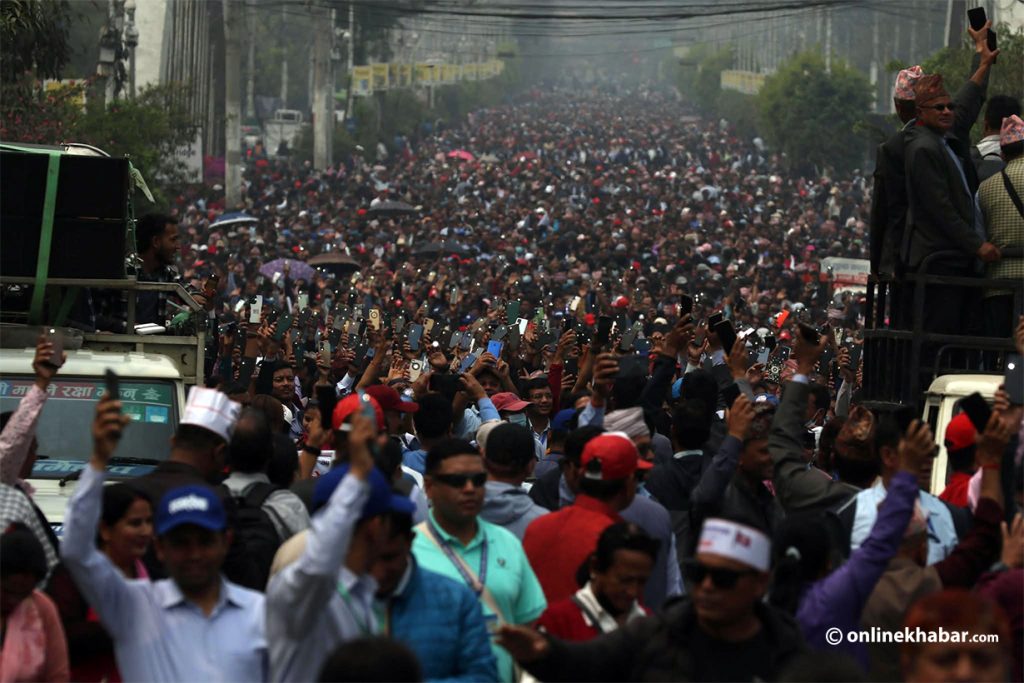
Anjal Niraula is a distributed solar expert. He is also a member of the Future Energy Leader’s group with the World Energy Council where he works on the Energy Access taskforce. As CEO of Gham Power, one of Nepal’s leading solar companies, he oversees R&D and product strategy, including business development, design, and engineering. He has been with Gham Power since it’s early days in 2010, when Nepal faced a severe power crisis with outages up to 18 hrs a day. Gham Power, which was first established to provide back-up for households during the crisis, now develops solar microgrids in rural areas and in urban areas it is developing itself as an energy service company. Onlinekhabar’s Abhaya Raj Joshi talked to Niraula recently on his company’s work and the way forward for solar power in Nepal, Excerpts:
Let’s start the interview talking about some global issues. The Chinese government recently made some policy changes to slash financial aid to developers after Chinese companies overshot targets. How has this affected your business? In Nepal, most of the PVs are imported from China.
As we all know is the world’s major solar PV producer and the demand and supply in the Chinese market affect markets worldwide, including that in Nepal. The policy change comes at an important time. There was a time when solar power cost around 50-60 cent per watt. But after the Chinese policy change, it dropped to 20-30 cents per watt. Before the price drop, solar was considered as an alternative source of power because of its price. But now we are past the price point where solar power can compete with other power sources. Thanks to the drop in prices, Gham Power can now offer power to its customers at a rate cheaper than that of the government grid. So if we look at the cost involved, it has hit the right price point for us to develop ourselves as an energy service company.
If the policy change had not come, what would have happened?
Solar PV prices have been falling for a long time and any other trigger would have also done the job. But the Chinese policy made it quicker. I believe that it would have eventually happened. When we started our business, people were using diesel generators as back up for power because the state utility could not supply reliable power. Back then also, solar power asaback-up was cheaper compared to diesel. But it was not considered a mainstream source of power. That is why we chose to go to places where access to grid power was limited to geographical reasons. We built micro-grids in areas where bringing grip power was costlier than setting up solar plants. But with the drop in prices and the restored stability in the grid, the commercial market soon began to look feasible for us.
One big criticism labeled against solar power is that it is not reliable. It depends on the amount of sunshine available.
This is the case with all the renewable energy sources. The amount of solar radiation and wind available to us is not under our control. Same is the case with hydro. The power output is directly related with the water available during different seasons. I think the bigger question most certainly is — how you devise strategies to integrate these intermittent energy sources into the grid which also has a variable demand. Digitisation and storage technology could play a bigger role there.
In the past, Nepal Electricity Authority was considered the sole provider of electricity in the country. But these days, companies such as Gham Power are also providing electricity. How does that work?
Until now, we have developed around 2-3 projects under the model we developed to provide cheaper power (compared to the grid) in urban areas. This model is a bit investment-intensive. We need to seek investors to put their money on such projects. This is a problem we’ll talk about later on.
But what we do is make the model feasible for the customer. We talk to potential clients, look at their roof space, their electricity bill, load profile and calculate the potential power that can be generated using solar PVs. At the moment, we only talk about offsetting the consumers’ dependence on grid electricity by using solar power. When the client signs up with us, they don’t need to pay anything for the solar plant; they pay a certain fee per unit of electricity they receive from our solar plant and after 15 years they get to own the entire system. They no longer have to pay us. As the system works for around 25-30 years, the customers get free power for around 15 years.
We are bearing all the risk and the cost associated with the project that’s why we are keen only on at least 50-100 KW projects. The downside is that if the grid becomes unstable again, we have to think about storage. But what we do is we design the installed capacity of our system to be lower than the actual consumption, so that we don’t have to sell excess power to the grid.
We talked about the fall in PV prices, but what about the batteries? Is that why your project model focuses on day-time offsetting rather than night?
To some extent yes. If you look at our nation’s peak demand, it occurs during the evening when solar production is not at it’s maximum. So, you eventually have to look at storage as an important part of integrating solar into the grid. But, in Nepal, the battery is still expensive. The tax incentives are still not there so just from an economic standpoint it might not make sense right not if you were to invest in batteries alone.
But, on a positive note, if you look at the international market, the price of batteries is also falling. There is great R&D work being done all over the world and we expect it to drop much more. In the very near future, I fully expect batteries to become a part of our grid and they would help provide much needed stability to the grid.
There was a time when the price of the PV was so high that it did not make economic sense to talk about it in a country where hydro has been the most popular source of energy. But now that the prices have fallen, what are some of the challenges you face in developing solar power projects?
That’s true. A few years ago, when the solar prices were high it was viewed more as an “alternative” source of energy. Either to provide power to remote communities, to have a reliable back-up during loadshedding or to displace diesel. Now when you talk about solar, you can actually start to talk about it in purely economic terms, because it can easily be cheaper than the grid and help you reduce your energy costs. But, for solar to really take off there are multiple challenges especially regulatory that need to be addressed.
First, it seems that government policy and laws related to energy, are framed with only hydropower in mind. Almost all the documentation that you need to submit to the authorities are hydro-related. For example, the EIA requirements of a hydropower plant and a solar plant are inherently different, but they need to have a similar structure. There is no consideration given for distributed solar which can be built on rooftops. So, the legalities around how approvals can be obtained for such projects are a bit vague.
Is finance a problem for companies like Ghampower?
Yes, it is. Financing solar power projects from a local bank still requires personal guarantees from project promoters despite which this can still be quite a lengthy process. In this case, companies like Ghampower which do not have the funds to perpetually bank-roll these projects struggle to develop a large portfolio..
The other issue with finance is that foreign direct investment proposals take at least 6-9 months to receive government approval. The threshold of foreign investment has been raised to 5 crore per tranche, which can be hard to obtain for a nascent market. Raising debt into SME’s from commercial foreign investors has also been barred. So, there have been instances where we have had to ask our sales team to actually reduce the size of project that we execute. For example – there was one instance where our client was intent on installing 500 kW of solar, but we had to reduce the size of the project to 200 kW.
Despite the tremendous potential the market holds, these policy bottlenecks have really slowed our path to scale. But, I am very hopeful that with the recently suggested amendments to the Electricity Act and the Foreign Investment Act will allow us to tap into this huge market and deploy cheap, reliable solar power at scale.
How does solar compete with hydro these days?
The beauty of solar is that it is very demand-driven. If you need 10 kw you set-up a 10 kw plant. The installation time is minimal and you can set it up on your roof, however much you need it. And guess what, it can be cheaper than what you are paying for the grid electricity.
Hydropower is definitely going to be the mainstay of energy generation in Nepal for the foreseeable future, and the fact that the National grid is so reliable has actually allowed us to set up these grid connected solar systems. So, in our case solar and hydro are not competing but are complementary to each other.
Distributed solar can help reduce the burden on the distribution infrastructure and bring massive monetary savings in terms of reduced losses and reduction in investment cost towards upgrading of the distribution infrastructure. With the increased electricity consumption planned through Electric vehicles and clean cooking, distributed solar will have a big role to play in allowing the utility to manage this demand. Digitisation is key in managing these distributed systems and creating a more robust grid in the country.
What is your take on the future of the energy market globally?
It’s going to be decentralised, it’s going to renewable and it will be digital. Storage and infrastructure will remain the key.
And for Nepal?
I see solar massive potential. Within a few years solar PVs will be a common sight on all houses in Kathmandu. What we need to do is get all the stakeholders together and focus on building the right policies for the future.
This story was prepared under a grant from Clean Energy Wire (CLEW), Germany.






















